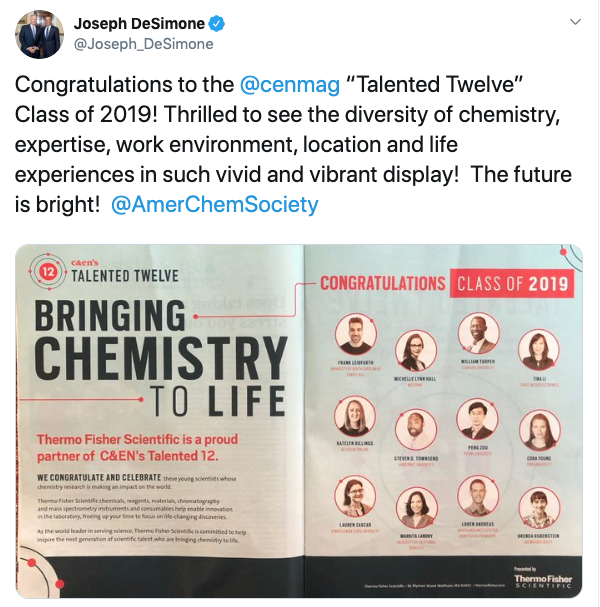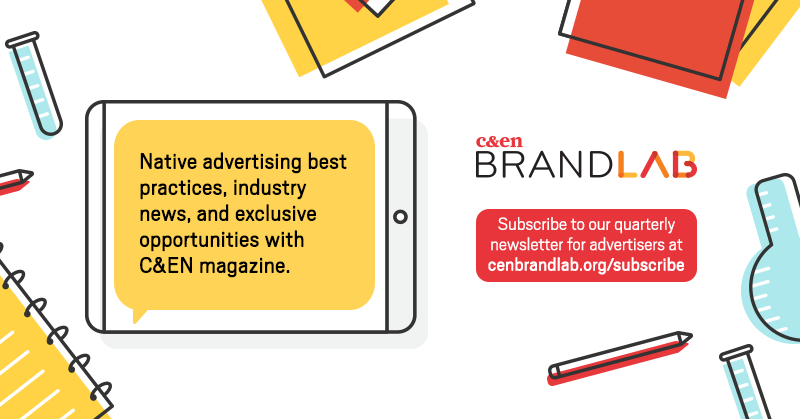Many people use the term “native advertising” broadly, but there are subtle differences between the types of media within it – and many, many related terms (such as sponsored content, advertorials, and content marketing) that further confuse the landscape. This article unpacks the key terms and provides science marketers with guidance on how to choose the right tactic to satisfy different business objectives.
Before diving into the pros and cons of various content marketing and advertising options, it’s worth addressing the value of this approach more broadly.
Why Invest in Content?
Content takes many different forms and can be promoted through various channels, of course; be it social media, your company website, or a third-party platform. In this article, we’re discussing the different paid options of native advertising that publications offer, such as our own C&EN.
In our case, this is primarily through our dedicated C&EN BrandLab custom content studio. Here, the various native, branded and content marketing options allow you and your company to control your story and become the news engine, while utilizing the strategy, design, and scientific expertise of our publisher’s studio. In this model, you work together to create content that is genuinely valuable to the audience, educating them about your company, establishing new relationships, and drawing potential customers in through our existing distribution channels.
This is very different than sponsoring content already being produced by a publication itself. The true editorial work. This has a different set of pros and cons as well. For instance, while you are underwriting a program without influence, it is also without the need to invest any of your own resources, aside from a logo and smaller brand awareness strategies. It is a much easier lift, while establishing a positive brand halo effect.
The benefits of using either content-rich native or sponsored tactics are well established. As this Inc. Magazine infographic calls out, 70% of internet users want to learn about brands through content-driven mediums, not only traditional display advertisements. If your company is selling tools or services to scientific audiences, this likely resonates particularly well. Scientific minds want information and evidence – not always a catchy tag line.
What are the most common native advertising terms?
Native advertising
Broadly speaking, native advertising tends to be an overarching term that specific tactics, such as advertorials, fall within. So native advertising can refer to many different types. According to Jesper Laursen, CEO of the Native Advertising Institute, this term describes “paid advertising where the format of the content matches the form, feel, function, and quality of the content of the media on which it appears.”
In other words, the content blends into its surroundings, though, when done well, not deceptively so. Good native advertising meets the reader’s expectations when they’re on a given site.
Branded content
Authors Lazar Dzamic and Justin Kirby in their book The Definitive Guide to Strategic Content Marketing describe branded content as, “funded or at least endorsed by the legal owner of the brand that promotes the owner’s brand values, and makes audiences choose to engage with the brand based on a pull logic due to its entertainment, information, and/or education value.”
As it relates to working with the publisher, the advertiser creates branded content, and it runs adjacent to regular editorial or through editorial distribution channels. However, branded content is often still reviewed by the publisher to ensure that it adheres to the editorial style and standards of the publication.
Here at C&EN, a good example is our supplied whitepaper services. C&EN will distribute a whitepaper you’ve already created, utilizing our distribution and marketing channels to create greater reach for your campaign. But our publication will still fact-check to ensure that it’s scientifically accurate and appropriate for our audiences.
Content Sponsorship
With content sponsorship, the advertiser pays to be listed as a sponsor of content that’s created by the publisher. The editorial could be a one-off article or a series of articles, with a single sponsor or multiple sponsors. The topic might be related to your business, but it won’t actively promote your company.
The publisher is in control of the content and who writes it, meaning you won’t have a say in what gets written. That said, the content you support needs to reflect your company and its mission.

A good example here is C&EN’s Talented 12 program.
This is a long-standing annual issue and event program that highlights up-and-coming chemists every year. Thermo Fisher Scientific has sponsored it for years, and their participation has included receptions, introductions to keynote speakers, recognition of the brand throughout all C&EN campaigns, and other ways to connect their company with the mission of the program.
However, they do not participate in the editorial work behind the scenes, like who gets chosen as a Talented 12 member.
Advertorials
Within native advertising, the flagship tactic is the advertorial.
This is advertiser-created content, usually a page or longer, that runs within or adjacent to a regular editorial. It will have a different look and feel than the rest of the publication however, to clearly distinguish it as an ad, as dictated by FTC guidelines. While an advertorial may have a compelling storytelling component that connects with the audience, the ultimate aim is to promote a product or service. Advertorials can also be distributed by the publisher as supplemental, standalone publications with one or multiple advertisers providing the copy.
Decision Criteria: How do you choose?
With all of these potential content types vying for a place in your marketing strategy, how do you decide which to go with? Here are five tips to help guide your selection.
- What’s your aim? Like all marketing initiatives, your business goals should guide which content approach you choose. If you’re trying to increase awareness, consider a top-of-the-funnel advertorial that positions your product or service as a leader in the field. If you’re trying to close more business, some branded lead-gen content, like a webinar series, would be a better fit.
- How promotional do you want to be? Related to the bullet above is the question of how directly you want to promote your products. For instance, branded content typically blends into the brand and acts as a resource rather than a sales piece. On the other hand, the FTC requires that advertorials – which tend to be promotional – stand apart from editorial content in specific ways. This distinction should be kept in mind when determining the appropriate content type for a given marketing goal.
- Who’s in charge of the draft? As we’ve illustrated with C&EN BrandLab, publications often have in-house content marketing teams that can create materials on your behalf. This is how sponsored content and custom content come about. A major benefit of utilizing a publisher is that it allows you to not only create the content, but to have it shared and distributed through the outlet’s network as well. With advertorials, however, the publisher is not involved in creating the content, except to publish it in the platform it was designed for. For example, a print advertorial will typically only be seen in print, just like a print ad.
At the end of the day, determining who is in charge of the draft (i.e., whether you write it in-house or lean on the publisher) can help you narrow down your options. If you have the resources to write and design your own advertorial, you will have less ‘oversight’ from a publisher. If you don’t, get pricing for a full-service content package.
- Do you want to go multimedia? When we think of branded, sponsored, or native advertising, most of us think of editorial-style articles. But there are many more options to consider, including videos, infographics, whitepapers, quizzes, and more. Ask what creative services the publication recommends and what they’re able to do in-house. Working with many companies, they will have good insight into what your science audience responds to.
- What else are you doing? At the heart of content marketing is the idea that results come with repetition, consistency, and an overarching strategy for engaging and converting leads. Whatever tactic you choose, make sure you do your content justice! Promote the content via e-newsletters and social media (even boosting it on certain platforms). You can – and should – do this on top of a publisher’s own promotion of your native piece. Think through what other materials you might be able to share to keep the conversation going or to secure contact information from the people who do engage.
Pulling It All Together
Successful content marketers can’t be a one-hit wonder. For maximum impact, they need to produce an ongoing, seamless experience. One of C&EN’s clients, W. R. Grace & Co., is a great example of this. In 2019, we worked with the company to increase recognition of its LUDOX® product line of aqueous colloidal silica, publishing the following suite of resources:
- A three-part native advertising campaign in C&EN, which told the history, present applications, and future prospects of colloidal silica.
- Two standalone eBooks that dug into specific research academics are doing with colloidal silica. As a lead generation tool, this generated fresh leads for its sales team.
- A contest and a quiz to further engage the audience.
- With all this content at our disposal, we put together a dedicated microsite that explored the many facets of colloidal silica, incorporating video and other engagements.
One final piece of advice: When in doubt, reach out to publishers.
They can you help you understand the different options and what typically performs well. This can reinforce your existing strategy or expand your approach to include another form of native, sponsored, and branded content that can drive even greater marketing results.



















